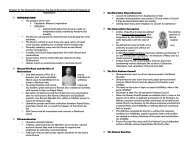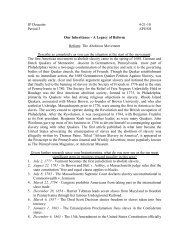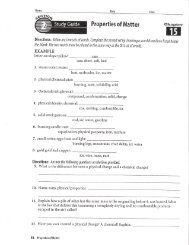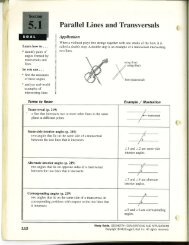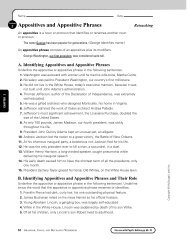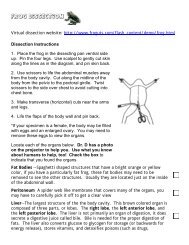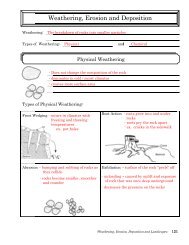Tarbiyah Project
Tarbiyah Project
Tarbiyah Project
You also want an ePaper? Increase the reach of your titles
YUMPU automatically turns print PDFs into web optimized ePapers that Google loves.
Powerful Idea Content Strand Goal<br />
God, the World & Me Belief & Piety God Awareness<br />
Knowing Yourself Self-concept & Well-being Self Confidence<br />
Becoming a Moral Person Moral Development Moral Reasoning<br />
Understanding & Being Understood Communications Mutual Understanding<br />
Getting Along with Others Relationships Cooperation<br />
A Sense of Belonging Family & Community Belonging<br />
Drawing Strength from the Past Culture Inspiration<br />
Islam for All Times & Places Change & Adaptability Resilience<br />
Caring for Allah’s Creation Justice & Peace Justice<br />
Facing the Challenge Contemporary Issues Facing Challenges<br />
Making a Difference Action & Responsibility Civic Responsibility<br />
Taking the Lead Leadership Skills Leadership<br />
Table 1: Powerful Ideas<br />
learn the importance of sound moral decisions and are more<br />
inclined to adopt them as their own.<br />
A comprehensive values education program must utilize both<br />
direct and indirect methods of teaching values. Methods of<br />
teaching values can be divided into three major categories,<br />
which are briefly described below.<br />
Inculcation (Thinking) (fZ´'Zz wº…£ rº ŒZ ˆfi )<br />
Inculcating values through lecturing, discussion, reading,<br />
moralizing and other such means is the most common<br />
approach for developing values in students. This approach<br />
aims at developing the students understanding of the<br />
importance and benefits of acting morally. Though, perhaps,<br />
not the most effective approach, this is an important basis<br />
and prerequisite for genuine moral development.<br />
Modeling (Seeing)<br />
Towards a Renewed Vision of Islamic Education<br />
( ⁄'‡Zz |z‹”£ rº ŒZ ˆfi)<br />
Modeling is the most important approach to fostering moral<br />
development in children and adolescents. Children imitate<br />
what they see others doing—good or bad. Role-modeling was<br />
the principal method used by our beloved Prophet () in<br />
teaching the message and spirit of Islam to the early Muslims<br />
(and for which they received their distinctive title sahabah, or<br />
companions (). Not through talk, primarily, but through his<br />
living example was the Prophet able to show his companions<br />
how to act and live morally. Muslim children and students<br />
desperately need to see Islamic values and principles in<br />
practice—in their homes, their schools, their communities and<br />
in Muslim society at-large. Then they will believe in Islam.<br />
Page 9




